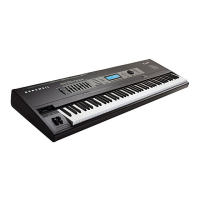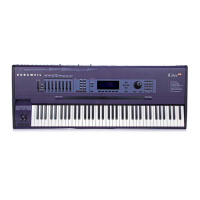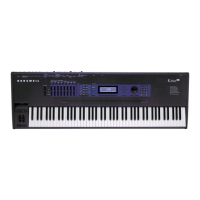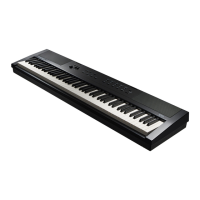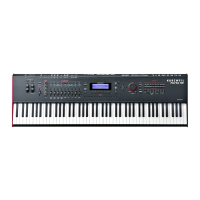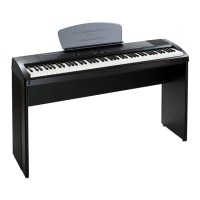13-16
Disk Mode
Disk Mode Functions
The objects in the list are usually grouped by type (sample, program, keymap, etc.). The list can
be scrolled using the Alpha wheel or the Up or Down cursors. The Chan/Bank buttons on the
front panel can be used for fast scrolling. The list will jump by Þve entries at a time, moving the
entry on the bottom line to the top line.
Note: When scrolling through large numbers of objects (more than 100), the K2600 may sometimes
pause for a few seconds if it needs to get more information from the disk Þle. When this happens, some
gyrating dots will brießy appear in place of the Index value on the top line of the display.
Each line in the scrollable list represents one object, and displays the objectÕs type, ID, name, and
size. Samples have additional information: the sampleÕs root key and a stereo sample indicator:
Sample||203|Tenor|Sax3|||||||||F#3S|||||198K
The ID numbers are the same numbers that were used to reference the objects when the Þle was
last saved by the K2600. These numbers will usually be different after the objects are loaded,
depending upon the bank (for example, 200...299) and mode that is speciÞed for loading. There
is more information on these modes in the section called Load Function Dialog on page 13-19.
The Size Þeld is interpreted differently for samples and nonsamples. For nonsamples (songs,
programs, etc.), it shows the number of bytes used by the object in the Þle, and hence the
amount of program memory that the object will occupy in the K2600. For samples, the size Þeld
shows the size of the all sample data associated with the object, and is displayed in kilobytes (K).
For samples, the letter S after the root key indicates a stereo sample.
Due to display space constraints, if the sampleÕs root key happens to be in the lowest MIDI
octave range (that is, C -1 through B -1), it will be displayed in a truncated form. For example, if
a sampleÕs root key was set to G
#
-1, the display would read:
Sample||293|Tenor|Sax||||G#-||||198K
The status line at the top of the display speciÞes the function being performed, the number of
selected objects in the list followed by the total number of objects in the Þle, and the current list
index:
Func:LOAD|||||Sel:0/5||||||||Index:|||1||
As with the Þle list, entering in a number from the alphanumeric buttonpad will jump to the
indexed entry, and typing in a large number like 9999 will go to the end of the list.
The soft buttons on this page are used for multiple selection of the objects in the list as well as for
moving around the list when there are many items selected or listed. This same dialog is also
used for many other functions in the K2600, namely for saving selected objects to disk and for
several object utility functions that are described later.
Object Type ID Name Sample Info Size
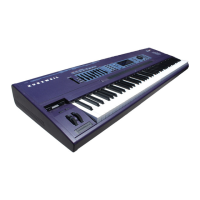
